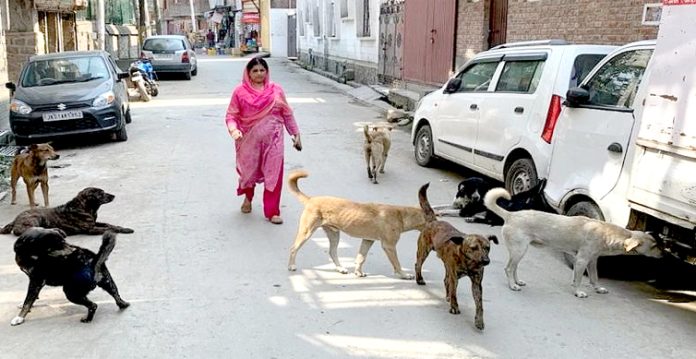In response to the rising number of dog-bite incidents across the city, the Greater Hyderabad Municipal Corporation (GHMC) has launched a comprehensive initiative aimed at managing the growing street dog population. Through its veterinary department, GHMC has embarked on a focused effort to capture, sterilise, and vaccinate stray animals to improve public safety and animal welfare.
As part of the initiative, teams from the GHMC veterinary section have successfully apprehended 788 street dogs in recent days. These animals have been vaccinated against rabies and sterilised as per the guidelines of the Animal Welfare Board of India. Of these, 323 dogs were sterilised during the operation. The GHMC’s move is part of a broader plan to reduce the dog population and prevent issues such as dog bites, which have been increasing in the city.
The city’s dog-catching teams, in collaboration with animal welfare organisations, have been active across six GHMC zones. According to Dr. Abdul Wakil, Chief Veterinary Officer of GHMC, the teams have been responding to complaints from local residents regarding stray dog issues. Over two days of intensive operations, a total of 788 street dogs were caught. On the first day, the teams apprehended 374 dogs, sterilised 145, and vaccinated all animals against rabies. The following day, the teams showed even greater success, capturing 414 dogs and sterilising 178.
Also Read: Harish Rao Criticizes State Government Over Rising Stray Dog Attacks
“These efforts are in line with our commitment to reducing the number of street dogs in the city through sterilisation and vaccination, following the best practices laid out by the Animal Welfare Board of India,” said Dr. Wakil.
The GHMC’s initiative is part of a larger strategy to address the growing concerns related to stray dog populations and the increasing frequency of dog bites. The corporation is also focusing on raising public awareness about the importance of responsible pet ownership and the need for community cooperation in managing stray animals.
In addition to sterilisation and vaccination, the GHMC has introduced measures to prevent further dog-bite incidents, including the implementation of its Animal Birth Control and Anti-Rabies (ABC-AR) programmes. These programmes are designed not only to manage the stray dog population but also to ensure the safety of residents by minimizing the spread of diseases such as rabies.
The GHMC’s efforts to address the stray dog issue have been overseen by senior officials, including GHMC Commissioner K. Ilambarithi, who has been actively involved in the process. Last week, Ilambarithi visited the Fatullaguda animal sanctuary, as well as the dog-catching vehicles and operation theatres used by the veterinary teams. He expressed satisfaction with the progress of the initiative but urged the veterinary department to increase the scale of operations.
“I have directed the teams to carry out sterilisation in large numbers and to ensure that a substantial number of dogs are caught and sterilised every day,” said Ilambarithi. “We will also look into the practices followed by cities like London, New York, and Singapore to understand how they manage stray dog populations.”
To further address the issue of wildlife-related concerns, the GHMC has also deployed an automatic monkey-trapping cage in the Venkatapuram Colony area of Banjara Hills, where complaints of a monkey menace had surfaced. This is part of a broader approach to managing urban wildlife and ensuring public safety.
The GHMC is committed to continuing its work with animal welfare organisations and local communities to implement long-term solutions for managing the city’s stray animal population. The initiative’s focus on sterilisation and vaccination is expected to yield positive results in reducing the risks associated with stray dogs, while also promoting the humane treatment of animals.
As GHMC intensifies its efforts, residents are encouraged to report stray dog sightings and incidents to the municipal corporation’s veterinary department, ensuring a more coordinated and efficient response to the issue. The GHMC’s work to prevent dog-bite incidents and manage the stray dog population is a step toward creating a safer and more responsible urban environment for all citizens.


